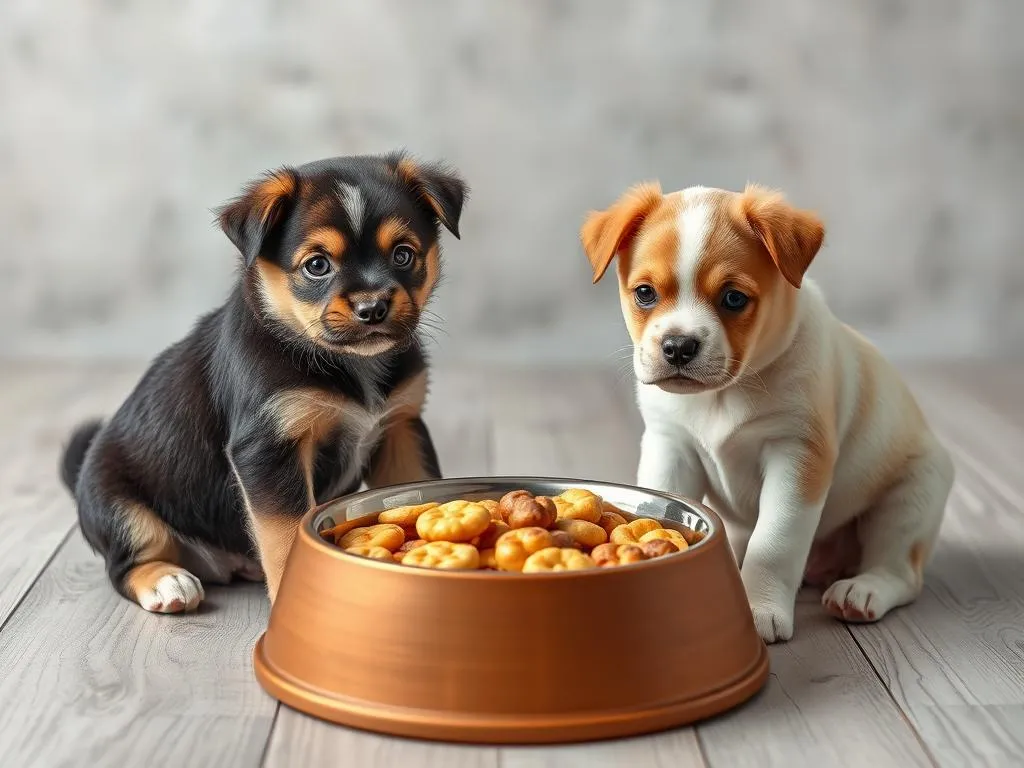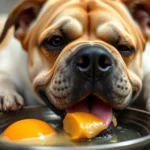
Introduction
As a new puppy owner, you’re undoubtedly excited about the journey ahead. One of the most crucial aspects of raising a healthy puppy is understanding dog nutrition and how it directly impacts their growth, health, and behavior. In this article, we’ll delve into the essentials of puppy nutrition and highlight the importance of selecting the best bowls for puppies. By making informed choices about your puppy’s food and feeding equipment, you can set the stage for a happy and healthy life.
Proper nutrition is vital for puppies as they are in a critical growth phase. The right balance of essential nutrients helps support their development, from strong bones to a healthy coat. But did you know that the feeding bowl you choose can also enhance your puppy’s eating experience? A well-designed bowl can promote better digestion and healthier eating habits. Let’s explore these topics in detail.
Understanding Puppy Nutrition
Nutritional Needs of Puppies
Puppies require a balanced diet that includes proteins, fats, carbohydrates, vitamins, and minerals. Each of these nutrients plays a significant role in their growth and development:
- Proteins: Essential for muscle development, growth, and repair. Look for high-quality dog food that lists meat as the primary ingredient.
- Fats: Provide energy and support healthy skin and coat. Omega fatty acids are particularly beneficial.
- Carbohydrates: Offer a source of energy and aid in digestion. Whole grains and vegetables are excellent options.
- Vitamins and Minerals: Support various bodily functions, including immune health and bone development. A balanced dog food should meet these requirements.
Common Puppy Dietary Requirements
The dietary needs of puppies vary according to their age and breed size. Young puppies (under six months) typically require more frequent feedings—around three to four times a day—while older puppies can transition to two meals. Additionally, high-quality puppy food formulated specifically for their age group is crucial, as it contains the right balance of nutrients to support their unique needs.
Potential Nutritional Deficiencies
It’s essential to be aware of potential nutritional deficiencies in puppy diets. Common deficiencies include:
- Calcium and Phosphorus: Important for bone growth, deficiencies can lead to skeletal issues.
- Vitamin E: Essential for skin health; a lack can result in dry, flaky skin.
- Omega Fatty Acids: These support a healthy coat and skin; deficiencies can lead to dull fur and skin problems.
Watch for signs like lethargy, poor coat condition, or growth issues, as they may indicate nutritional concerns.
The Role of Feeding Bowls in Dog Nutrition
Importance of Choosing the Right Bowl
While dog nutrition primarily focuses on the food itself, the bowl you choose can significantly impact your puppy’s eating habits and overall health. A well-designed bowl can facilitate better digestion by preventing food from being consumed too quickly, which is particularly relevant for fast eaters. Additionally, the right bowl height can encourage proper posture during feeding, minimizing the risk of digestive issues.
Types of Bowls Available
Material Types
When selecting the best bowls for puppies, consider the following materials:
- Stainless Steel: Durable, non-porous, and easy to clean. They don’t retain odors or bacteria, making them a hygienic choice.
- Ceramic: Often aesthetically pleasing and heavier, reducing the risk of tipping. Ensure they are lead-free and dishwasher safe.
- Plastic: Lightweight and affordable, but can scratch easily and harbor bacteria. Look for BPA-free options.
- Silicone: Flexible and easy to clean; some are designed to collapse for portability.
Size and Shape Considerations
Choosing the right bowl size is crucial for different breeds. Smaller breeds may require shallower bowls, while larger breeds might need deeper bowls to accommodate their size. A deep bowl can help prevent spills, while a shallow bowl may be easier for puppies to access.
Features to Consider in Feeding Bowls
When selecting the best bowls for puppies, consider these features:
- Non-slip Bases: Prevent slipping and sliding during mealtime, ensuring stability.
- Elevated Bowls: Beneficial for larger breeds, as they can promote better posture and reduce strain on the neck.
- Slow Feeder Bowls: Designed with obstacles to slow down fast eaters, promoting healthier eating habits.
- Dishwasher-Safe Options: Ensures easier cleaning and maintenance.
Recommendations for the Best Bowls for Puppies
Top Bowl Picks Based on Material
Stainless Steel Bowls
Stainless steel bowls are widely regarded as one of the best bowls for puppies due to their durability and ease of cleaning. Look for options with a non-slip base to prevent spills. Brands like PetFusion and AmazonBasics offer reliable stainless steel bowls that stand the test of time.
Ceramic Bowls
Ceramic bowls can add a touch of style to your home while providing a stable feeding environment. Ensure they are lead-free and dishwasher-safe. The PetFusion Ceramic Dog Bowl is a popular choice, known for its sturdy design and attractive appearance.
Plastic Bowls
While plastic bowls are lightweight and affordable, it’s essential to choose high-quality options that are BPA-free. Brands like Outward Hound offer colorful and functional plastic bowls that are perfect for puppies.
Best Bowls for Specific Needs
For Fast Eaters
If your puppy tends to gobble down their food, consider investing in a slow feeder bowl. These bowls are designed with dividers that slow down the eating process, reducing the risk of bloat and indigestion. The Outward Hound Fun Feeder is a top-rated option that promotes healthy eating habits.
For Puppies with Allergies
For puppies with allergies, hypoallergenic bowls made from safe materials like stainless steel or silicone can minimize the risk of reactions. Look for bowls specifically labeled as hypoallergenic to ensure they meet your puppy’s needs.
Price Ranges and Budget Considerations
Bowls for puppies come in various price ranges, from budget-friendly options to premium selections. While it’s tempting to go for the cheapest option, investing in a high-quality bowl can lead to long-term benefits. Expect to pay anywhere from $10 to $50, depending on material and features. Remember, quality often trumps price when it comes to your puppy’s health and well-being.
Tips for Maintaining Feeding Bowls
Cleaning and Hygiene
Keeping your puppy’s feeding bowl clean is essential for their health. Here are some best practices:
- Wash after every meal: Clean the bowl with warm, soapy water to remove food residue and bacteria.
- Use a dishwasher: For dishwasher-safe bowls, run them through a cycle regularly for thorough cleaning.
- Avoid harsh chemicals: Stick to pet-safe cleaning products to prevent any harmful residues.
Regular Inspection for Wear and Tear
Regularly inspect your puppy’s bowls for signs of wear and tear. Look for:
- Cracks or chips: These can harbor bacteria and pose a choking hazard.
- Scratches on plastic: Scratches can trap bacteria and may indicate it’s time for a replacement.
Importance of Regularly Changing Bowls
As your puppy grows, their needs will change. Regularly assess whether their current bowl is still appropriate in size and design. Upgrading to a larger bowl can help accommodate their growth and prevent mess during mealtime.
Conclusion
In summary, understanding dog nutrition and choosing the best bowls for puppies are both integral to raising a healthy and happy pet. Proper nutrition fuels your puppy’s growth and development, while the right feeding bowl can enhance their eating habits and overall experience. As a puppy owner, investing time and resources into these aspects will pay off in the long run, promoting better health and happiness for your furry friend.
Frequently Asked Questions (FAQs)
How often should I feed my puppy?
Puppies typically require three to four meals a day until they are about six months old. After that, you can transition to two meals a day.
What size bowl is best for my puppy?
The best bowl size depends on your puppy’s breed and size. Smaller breeds generally need shallower bowls, while larger breeds benefit from deeper bowls.
Can I use my old dog’s bowl for my puppy?
It’s best to avoid using an old dog’s bowl for your puppy, especially if it shows signs of wear or has been used for a dog with health issues. Opt for a new bowl to ensure cleanliness and hygiene.
How do I transition my puppy to a new bowl?
To transition your puppy to a new bowl, place the new bowl next to the old one during mealtime. Gradually encourage your puppy to use the new bowl by adding their favorite food or treats. Be patient, as it may take some time for them to adjust.
By understanding the importance of dog nutrition and selecting the best bowls for puppies, you set the foundation for a thriving companion. Happy feeding!









